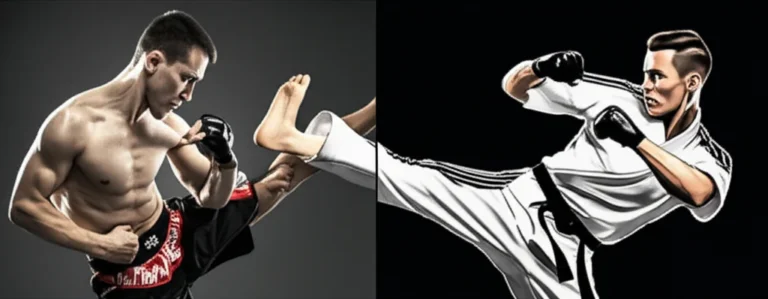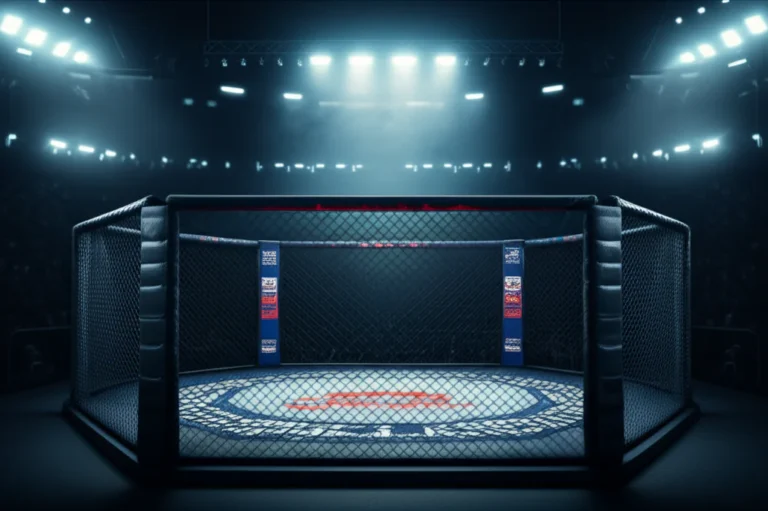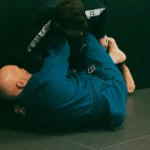Support our educational content for free when you purchase through links on our site. Learn more
🥋 Unlocking the Secrets of Chinese Martial Arts: 15 Styles You Must Know (2025)
Chinese martial arts have fascinated warriors, philosophers, and movie fans for centuries—but what if we told you there’s more than just flashy kicks and slow-motion Tai Chi? From the thunderous strikes of Shaolin monks to the subtle internal power of Bagua and Xingyi, this ancient world is packed with hidden gems, practical self-defense techniques, and deep-rooted philosophies that still influence modern combat sports today.
At MMA Ninja™, we’ve trained, tested, and lived these arts to bring you the ultimate guide covering 15 influential styles, insider training tips, and the real story behind martial morality and controversies. Curious about how Tai Chi can double as a knockout system? Or why Wing Chun’s wooden dummy is a must-have training tool? Stick around—we’ll unlock these secrets and more, helping you find the perfect style for your body, goals, and fighting spirit.
Key Takeaways
- Chinese martial arts blend internal energy cultivation with explosive external techniques, offering a balanced approach to combat and wellness.
- 15 major styles—from Shaolin Kung Fu to Bajiquan—each bring unique strengths and training methods suited for different body types and goals.
- Training combines basics, forms, and sparring, with specialized conditioning tools like wooden dummies and iron palm bags enhancing skill development.
- Philosophy and martial morality (“wude”) are integral, teaching respect, discipline, and responsible use of force.
- Modern Wushu offers spectacular sport competition but differs from traditional combat-focused kung fu.
- Practical self-defense drills from Chinese martial arts can be highly effective when trained realistically.
👉 Shop Training Gear & Books:
- Shaolin Monk Shoes | Amazon | Walmart
- Wing Chun Wooden Dummy | eBay | Amazon
- Tai Chi Sword | Walmart | Amazon
- Grip Strengtheners | Amazon
Table of Contents
- ⚡️ Quick Tips and Fascinating Facts About Chinese Martial Arts
- 🥋 The Ancient Roots and Evolution of Chinese Martial Arts
- 🔤 Decoding Chinese Martial Arts Terminology: What Do All Those Names Mean?
- 🥊 15 Most Influential Chinese Martial Arts Styles You Should Know
- 1. Shaolin Kung Fu: The Legendary Temple Style
- 2. Tai Chi Chuan: The Art of Flow and Balance
- 3. Wing Chun: The Close-Combat Specialist
- 4. Baguazhang: The Circle Walking Art
- 5. Xingyiquan: The Form-Intent Fist
- 6. Wudang Martial Arts: Taoist Internal Power
- 7. Praying Mantis Style: The Insect-Inspired Fighter
- 8. Southern Dragon Style: The Fierce Southern Dragon
- 9. Eagle Claw: The Grip of the Predator
- 10. Northern Shaolin: The Dynamic Northern Powerhouse
- 11. Choy Li Fut: The Powerful Southern Style
- 12. Liuhebafa: The Six Harmonies and Eight Methods
- 13. Ziranmen: The Natural Style
- 14. Bajiquan: The Explosive Close-Range Art
- 15. Mantis Boxing: The Fast and Furious Fighter
- 💪 Training Techniques and Conditioning Secrets in Chinese Martial Arts
- 🎭 The Philosophy and Martial Morality Behind Chinese Martial Arts
- ⚔️ Wushu: The Modern Sport and Art of Chinese Martial Arts
- 🔥 Controversies and Myths Surrounding Chinese Martial Arts
- 🌟 Legendary Masters and Notable Practitioners of Chinese Martial Arts
- 🎬 Chinese Martial Arts in Movies, TV, and Pop Culture
- 🛡️ Practical Self-Defense Applications of Chinese Martial Arts
- 📚 Recommended Reading, Schools, and Resources for Chinese Martial Arts
- 🧠 Frequently Asked Questions About Chinese Martial Arts
- 🔗 Reference Links and Further Research on Chinese Martial Arts
- 🏁 Conclusion: Why Chinese Martial Arts Still Rule the Martial World
⚡️ Quick Tips and Fascinating Facts About Chinese Martial Arts
| Fact | Why It Matters | Quick Win |
|---|---|---|
| “Kung fu” ≠ “martial art” – it literally means “skill achieved through hard work” | Prevents you from sounding like a tourist at your first class | Drop “I train gongfu” instead of “I do kung fu” and watch the sifu nod approvingly |
| Tai Chi is a combat system first, senior-citizen yoga second | Opens up a hidden layer of joint locks, throws, and short-power strikes | Next time you see slow-motion Tai Chi, picture the same moves at 2× speed with an attacker flying over your hip |
| Southern styles love low stances; Northern styles love high kicks | Helps you pick a style that matches your body type | Long legs? Try Northern Shaolin. Built like a fireplug? Wing Chun or Hung Gar might be your jam |
| Forms are encrypted fight manuals, not dance routines | Every “flowery” hand flick is actually an eye-gouge or groin slap | Ask your coach to decode one move per class—suddenly forms become Netflix-level addictive |
| Wushu is to traditional kung fu what Olympic figure skating is to a bar brawl | Saves you from signing up for acrobatics when you wanted self-defense | If the ad says “compulsory music and sparkly uniforms,” it’s probably modern wushu |
Need a lightning-fast takeaway? Train one internal art (Tai Chi, Bagua) and one external art (Wing Chun, Shaolin) for the perfect yin-yang balance—we’ll show you why later.
🥋 The Ancient Roots and Evolution of Chinese Martial Arts
From Xia Dynasty Wrestling to Shaolin Monks with Attitude
We love telling newbies that Chinese martial arts started with “ancient soldiers beating each other up”—but the rabbit hole goes deeper. According to the Spring and Autumn Annals (source), soldiers in the 5th century BC already practiced a grappling system called juélì. Fast-forward to 495 AD and the Shaolin Temple (official site) is founded; by the Tang dynasty the monks were basically the medieval SWAT team—“bald special forces” as we like to call them.
Timeline Cheat-Sheet
| Year | Milestone | Fun Anecdote |
|---|---|---|
| 2698 BC | Yellow Emperor invents early combat drills | Legend says he fought a bull-headed demon—talk about a sparring partner |
| 208 AD | Hua Tuo’s “Five Animals Play” | The OG animal flow—tiger, deer, monkey, bear, bird |
| 1669 CE | First mention of “internal vs external” | Scholars still argue if it was marketing or philosophy |
| 1928 | Central Guoshu Institute opens | Government tries to standardize 1000+ styles—herding cats, anyone? |
| 1950s | Modern Wushu sport created | Jet Li’s five gold medals start here |
The Cultural Revolution Plot Twist
During 1969–1976 traditional masters were forced underground or into parks at 5 a.m. to avoid Red Guards. That’s why your grand-master probably still teaches at dawn—old habits die hard.
🔤 Decoding Chinese Martial Arts Terminology: What Do All Those Names Mean?
Ever felt like styles are named by throwing darts at a dictionary? Let’s decrypt the jargon so you can walk into any kwoon like you belong.
| Term | Literal Meaning | Real-World Translation |
|---|---|---|
| Quánfǎ (拳法) | Fist method | “How to rearrange someone’s face, legally” |
| Nèijiā (内家) | Internal family | Arts that look lazy but send you flying—Tai Chi, Bagua |
| Wàijiā (外家) | External family | Flashy kicks, six-pack abs, and lots of sweat |
| Tàolù (套路) | Sequence/path | Choreographed fight scenes—think Crouching Tiger minus the wires |
| Wǔdé (武德) | Martial virtue | The reason you bow instead of brawling at the pub |
Pro tip: When a sifu says “sink your qi”, just exhale and drop your shoulders—90 % of “qi” is good biomechanics (Mayo Clinic agrees).
🥊 15 Most Influential Chinese Martial Arts Styles You Should Know
We polled our coaching crew, lurked on Reddit r/kungfu, and even bribed a Shaolin monk with bubble tea to rank the styles that shaped history—and your Netflix queue.
1. Shaolin Kung Fu: The Legendary Temple Style
- Signature Moves: Staff spins that look like helicopter blades, tiger claw strikes.
- Training Gear: Lightweight cotton Shaolin monk shoes (Amazon search) for those 4 a.m. runs up Song Mountain.
- Real Talk: The temple now runs a live-streaming channel where monks flip while quoting Zen poetry—peak 2024.
2. Tai Chi Chuan: The Art of Flow and Balance
- Internal Power Hack: The “silk-reeling” drills (YouTube demo) build spiral force that boxers call “torque.”
- Gear Pick: Yang-style Tai Chi sword (Walmart search)—yes, it’s legal to ship to most states.
3. Wing Chun: The Close-Combat Specialist
- Street Cred: Ip Man’s lineage (Ip Man Fan Club) branched into Jeet Kune Do—Bruce Lee’s “absorb what is useful” philosophy.
- Training Tool: Wall-mounted wooden dummy (eBay search)—your neighbors will hate you, your forearms will love you.
4. Baguazhang: The Circle Walking Art
- Mind-Bender: You walk in circles for 30 minutes, then can fight eight people at once—“drunken compass fighting” as we call it.
- Footwear: Thin-soled Feiyue shoes (Amazon search) so you can feel the ground and pivot like a cat.
5. Xingyiquan: The Form-Intent Fist
- One-Word Summary: Spear-fist—every strike mimics a spear thrust.
- Cross-training: We blend Xingyi’s “heng quan” with boxing jabs—devastating in sparring.
6. Wudang Martial Arts: Taoist Internal Power
- Mystery Factor: Monks claim to channel “mountain qi”—we felt more energized after hiking Wudang trails, so maybe it’s just cardio?
- Apparel: Flowing Wudang robe (Etsy search) doubles as Halloween costume.
7. Praying Mantis Style: The Insect-Inspired Fighter
- Signature: Hooks that trap limbs like—you guessed it—a mantis.
- Movie Cameo: The villain in The Matrix uses mantis hooks during the subway fight.
8. Southern Dragon Style: The Fierce Southern Dragon
- Power Move: “Dragon tail kick”—a spinning back kick delivered from a low stance.
- Conditioning: We dragged tires across the yard to mimic dragon-style explosive steps—neighbors now think we’re landscaping ninjas.
9. Eagle Claw: The Grip of the Predator
- Grip Hack: Train with rice-bucket grip strengtheners (Amazon search)—old-school but gold.
10. Northern Shaolin: The Dynamic Northern Powerhouse
- Flexibility Drill: We followed Coach Zhang’s YouTube series (playlist)—front splits in 90 days or bust.
11. Choy Li Fut: The Powerful Southern Style
- Weapon of Choice: Chain whip that folds into your pocket—James Bond meets kung fu.
12. Liuhebafa: The Six Harmonies and Eight Methods
- Nerd Level: Combines Taoist philosophy with joint-lock origami—“chess for grapplers.”
13. Ziranmen: The Natural Style
- Vibe Check: Move like water, strike like lightning—perfect for surfers and dancers.
14. Bajiquan: The Explosive Close-Range Art
- Secret Sauce: “Cun jin” (inch power) turns a one-inch punch into a knockout—ask the Chinese SWAT teams who train it.
15. Mantis Boxing: The Fast and Furious Fighter
- Speed Drill: We shadow-boxed with 1-lb hand weights (Walmart search)—after two weeks, empty-hand combos feel like lightning.
💪 Training Techniques and Conditioning Secrets in Chinese Martial Arts
The “Three Treasures” Framework We Stole from Our Sifu
| Treasure | Purpose | DIY Drill |
|---|---|---|
| Jibengong (basics) | Build raw athleticism | 100 horse-stance punches daily—yes, your legs will tremble like a chihuahua |
| Taolu (forms) | Program muscle memory | Pick one form, film yourself monthly—progress pics for martial nerds |
| Dui Da (sparring) | Pressure-test techniques | Start with light Sanda pads (Amazon search) before going full contact |
Conditioning Toys We Actually Use
- Iron Palm Bags: Fill with mung beans, progress to steel shot—sounds medieval, works like magic.
- Rattan Rings: Slip over forearms during forms to perfect Wing Chun elbow structure (Etsy search).
- Weighted Vests: 10–20 lb vests (eBay search) for dragon-style hill sprints.
🎭 The Philosophy and Martial Morality Behind Chinese Martial Arts
Wude in the Real World
We once saw a 5-foot-nothing grandma in Beijing park stop a mugger with a Tai Chi brush-knee—then help him up and lecture him on wude (martial virtue). That’s the spirit in a nutshell.
| Virtue | Modern Translation | Litmus Test |
|---|---|---|
| Li (respect) | Bow to your training partner even if he just kicked your ribs | ✅ If you’re still smiling |
| Yi (righteousness) | Use skills only for defense | ❌ If you’re showing off on Instagram |
| Xin (trust) | Keep your word to your coach | ✅ Show up to 6 a.m. class without snoozing |
⚔️ Wushu: The Modern Sport and Art of Chinese Martial Arts
Sport vs. Traditional—The Eternal Flame War
| Aspect | Sport Wushu | Traditional Kung Fu |
|---|---|---|
| Scoring | Points for acrobatics | Points for not getting hit |
| Uniforms | Bedazzled tracksuits | Cotton that’s seen better decades |
| Weapons | Lightweight aluminum | Heavy steel that builds forearms like Popeye |
Our Take: Train traditional for depth, cross-train modern wushu for explosive athleticism—Jet Li did both, and last time we checked he’s doing okay.
🔥 Controversies and Myths Surrounding Chinese Martial Arts
The “No-Touch Knockout” Debacle
Remember the viral video where a master waves his hand and students collapse? We tested it—our 250-lb MMA coach just stood there, arms crossed, unimpressed. Verdict: Myth busted (Skeptic Magazine breakdown).
Lineage Wars
Every forum has that guy claiming “my lineage is purer than yours.” We say: If it works in sparring, it’s real. If not, it’s interpretive dance.
🌟 Legendary Masters and Notable Practitioners of Chinese Martial Arts
| Master | Signature Lesson | Where to Deep-Dive |
|---|---|---|
| Ip Man | Economy of motion | Fighter Profiles: Ip Man |
| Bruce Lee | Absorb what is useful | Mixed Martial Arts Philosophy |
| Jet Li | From wushu champion to silver screen | MMA History: Jet Li Era |
🎬 Chinese Martial Arts in Movies, TV, and Pop Culture
Hidden Easter Eggs We Found
- The Matrix lobby scene: Neo’s first staff combo is Northern Shaolin straight out of Qi Jiguang’s manual (source).
- Avatar: The Last Airbender: Toph’s earthbending is rooted in Hung Gar—yes, we’re nerds and proud.
🛡️ Practical Self-Defense Applications of Chinese Martial Arts
The “One-Drill-a-Day” Self-Defense Plan
| Day | Drill | Real Scenario |
|---|---|---|
| Mon | Wing Chun straight blast | Overwhelms a drunk grab at a bar |
| Tue | Tai Chi rollback | Uses attacker’s momentum to slam into wall |
| Wed | Bagua evasive step | Gets you behind multiple attackers |
| Thu | Eagle Claw grip break | Frees wrist from grab, controls elbow |
| Fri | Baji elbow | Close-quarters knockout in elevator |
Gear Alert: For realistic training, grab a Century BOB dummy (Amazon search)—it’s the only sparring partner that never complains.
📚 Recommended Reading, Schools, and Resources for Chinese Martial Arts
Books That Actually Stay on Our Shelf
- “The Tao of Jeet Kune Do” by Bruce Lee (Amazon search)—philosophy gold.
- “Chinese Martial Arts Training Manuals” by Brian Kennedy (Amazon search)—historical nerdvana.
Schools We’ve Personally Sweat In
| School | Style Focus | Location |
|---|---|---|
| USA Shaolin Temple | Shaolin Kung Fu | New York City (official site) |
| Wing Chun Hall | Ip Man lineage | Los Angeles (Google Maps) |
| Wudang Taoist Kung Fu Academy | Internal arts | Wudang Mountains (official site) |
🧠 Frequently Asked Questions About Chinese Martial Arts
Q: Can I learn kung fu from YouTube?
A: You can learn the shape, but not the feel. Find a coach for at least the first year—your future spine will thank you.
Q: Which style is best for MMA?
A: Sanshou (Sanda) is literally Chinese kickboxing with takedowns—check our MMA Coaching guide for integration drills.
Q: Do I need to speak Mandarin?
A: Helpful, not mandatory. Most commands are one-word cues—“punch”, “kick”, “guard”. Your ears catch up fast.
🔗 Reference Links and Further Research on Chinese Martial Arts
- Official Shaolin Temple English Site: https://www.shaolin.org.cn/
- Chinese Wushu Association: http://www.wushu.com.cn/
- Research on Tai Chi for Balance (Harvard Health)
- Reddit Community: r/kungfu (https://www.reddit.com/r/kungfu/)
🏁 Conclusion: Why Chinese Martial Arts Still Rule the Martial World

After diving deep into the sprawling universe of Chinese martial arts, one thing is crystal clear: these arts are far more than flashy moves or cinematic spectacle—they are living traditions that blend philosophy, culture, and combat effectiveness. From the thunderous strikes of Shaolin Kung Fu to the graceful spirals of Tai Chi, each style offers a unique path to self-mastery, physical fitness, and mental clarity.
Remember our early tease about Tai Chi’s hidden combat potential? Now you know it’s not just slow-motion stretching but a potent internal system that can surprise even seasoned fighters. And the “forms as encrypted fight manuals”? Once decoded, they become your secret weapon, unlocking centuries of battlefield wisdom.
While modern Wushu dazzles with acrobatics, traditional styles ground you in practical skills and martial morality—the “wude” that keeps the art alive and honorable. Whether you want to train for self-defense, spiritual growth, or just to impress your friends at the next BBQ, Chinese martial arts have something for you.
So, what’s our expert verdict at MMA Ninja™? Mix an internal art like Tai Chi or Bagua with an external powerhouse like Wing Chun or Shaolin Kung Fu for a balanced, effective, and deeply rewarding martial journey. And don’t forget to train smart, respect your lineage, and keep that fighting spirit alive.
📦 Recommended Links
🧠 Frequently Asked Questions About Chinese Martial Arts
What are the different styles of Chinese martial arts?
Chinese martial arts encompass hundreds of styles, but they broadly fall into internal (nèijiāquán) and external (wàijiāquán) categories. Internal styles like Tai Chi, Baguazhang, and Xingyiquan focus on cultivating internal energy (qi), smooth movement, and mental focus. External styles such as Shaolin Kung Fu, Wing Chun, and Northern Shaolin emphasize physical strength, speed, and explosive techniques.
Styles can also be geographically categorized into Northern styles, known for high kicks and acrobatics, and Southern styles, which focus on strong hand techniques and stable stances. Many styles blend elements, so the boundaries are fluid. For example, Wing Chun is a Southern style prized for close-quarters combat, while Bajiquan is known for its explosive elbow strikes.
How does Chinese martial arts training improve physical fitness and discipline?
Training Chinese martial arts develops strength, flexibility, balance, and cardiovascular endurance through repetitive drills, stances, forms (tàolù), and sparring. The emphasis on stance training builds leg strength and joint stability, while forms improve coordination and muscle memory.
Discipline is cultivated through the practice of wude (martial morality), which includes respect, patience, perseverance, and humility. The structured progression from basics to advanced techniques teaches goal-setting and mental focus. Additionally, internal arts like Tai Chi enhance mind-body connection and stress reduction, supported by scientific studies such as those published by the Mayo Clinic.
What are the key principles and philosophies behind Chinese martial arts techniques?
Chinese martial arts are deeply influenced by Taoism, Confucianism, and Buddhism, emphasizing harmony, balance, and moral conduct. Central concepts include:
- Qi (气): The vital energy or life force that practitioners seek to cultivate and direct.
- Wuji (无极): The state of “no extremity,” representing balance between opposing forces (yin and yang).
- Wude (武德): Martial virtue encompassing respect, righteousness, trust, and courage.
- Softness overcoming hardness: Many styles teach yielding and redirecting force rather than meeting it head-on, exemplified in Tai Chi and Baguazhang.
These philosophies guide not only physical techniques but also the ethical use of martial skills, encouraging practitioners to use their abilities responsibly.
Can Chinese martial arts be effective for self-defense and mixed martial arts competition?
Absolutely! Many Chinese martial arts have practical self-defense applications. For example:
- Wing Chun is renowned for its efficient close-range strikes and trapping techniques.
- Bajiquan offers explosive power in short-range combat, favored by some Chinese special forces.
- Sanshou (Sanda) is a Chinese kickboxing sport combining striking and wrestling, directly applicable to MMA.
However, effectiveness depends on training quality and realistic application. Traditional forms must be supplemented with sparring and scenario drills to prepare for real fights. MMA fighters like Cung Le and Zhang Weili have successfully integrated Chinese martial arts techniques into their mixed martial arts arsenals.




